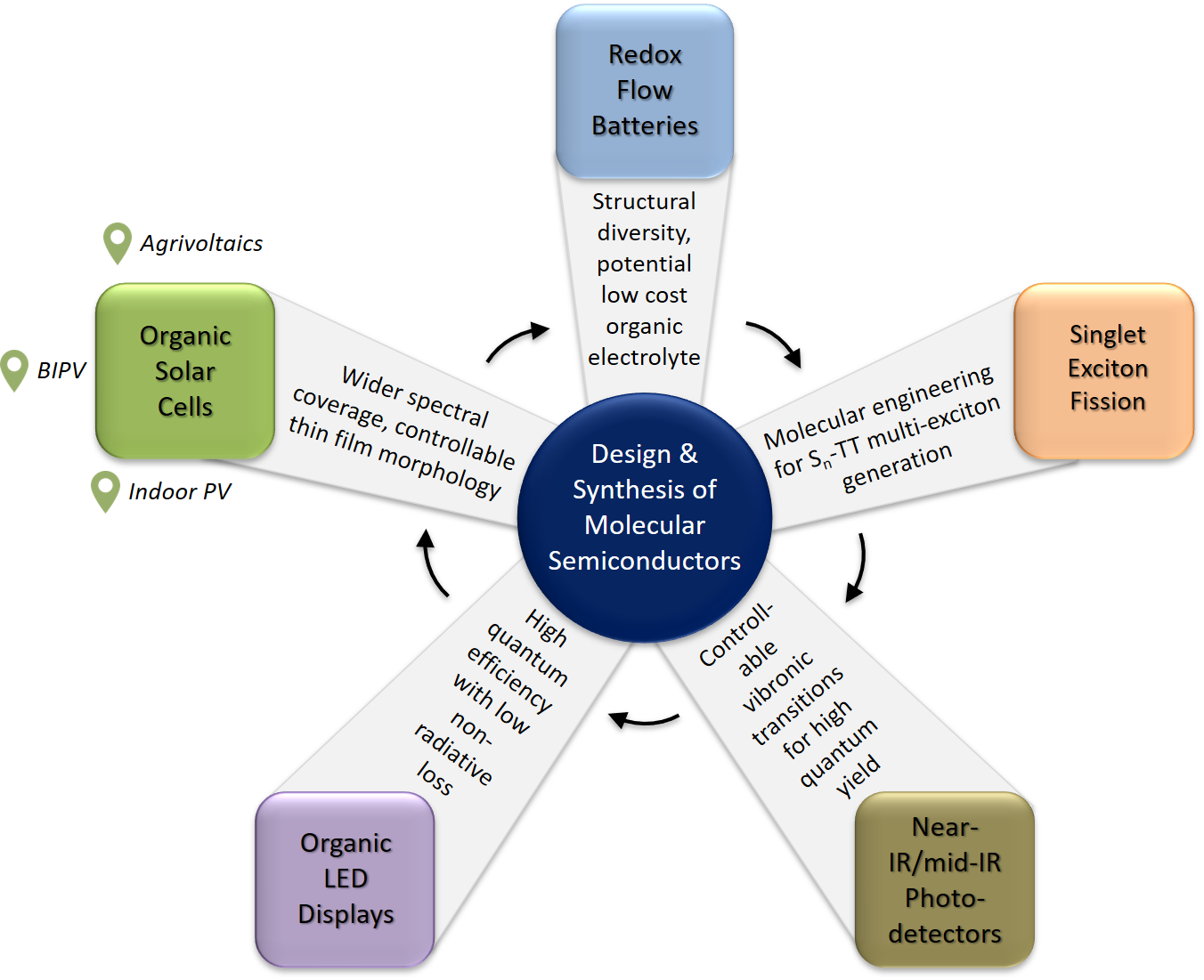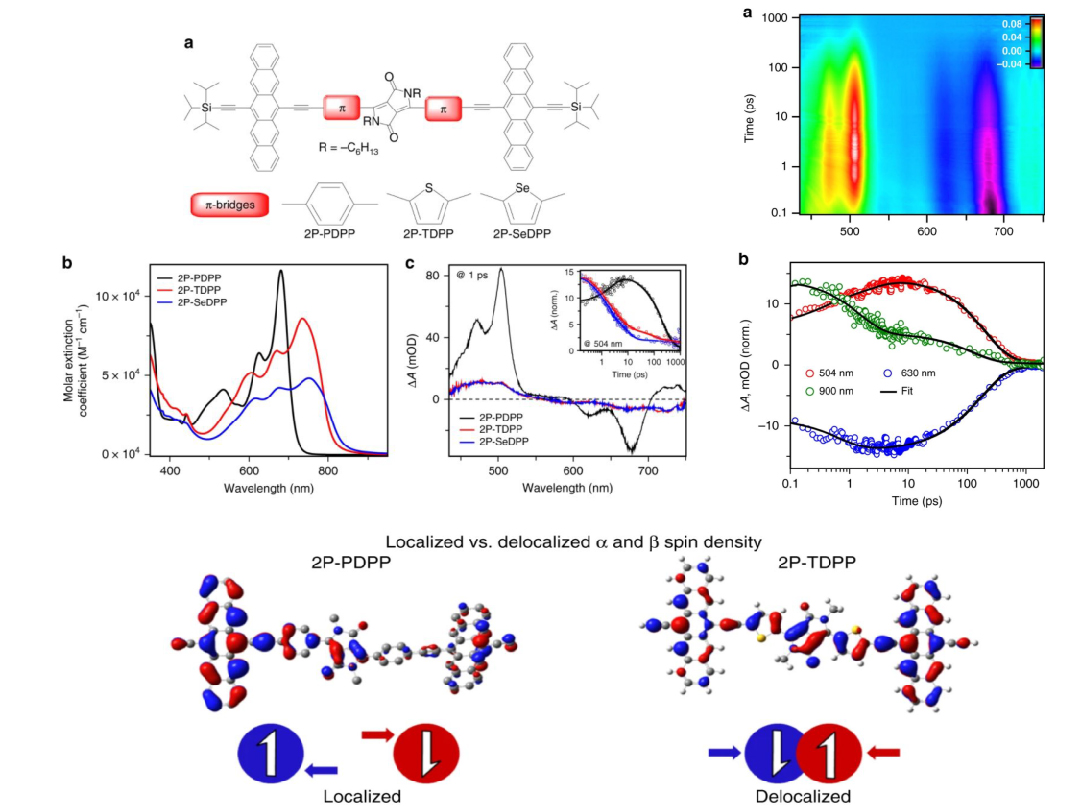Research

Singlet Fission and Thermally Activated Delayed Fluorescence

Spin density encodes intramolecular singlet exciton fission in pentacene dimers
In organic chromophores the first excited singlet and the lowest triplet energy gap is very important in determining its physical and optical properties. Whereas a low energy gap makes it suitable for delayed fluorescence, a high enough energy gap where the triplet is near about half the first excited singlet energy makes it favorable for a phenomenon called Singlet Fission. In our group we explore molecular design principles that allow us to modulate this energy gap for various applications in Organic photovoltaics (OLED’s and Solar Cells). We investigate the excited state dynamics with various steady state and time resolved spectroscopic techniques to understand the various recombination processes, exciton dynamics and charge carrier generation for optimised in-house fabrication of organic photovoltaic devices.
Singlet Fission (SF) is a bichromophoric process whereby a singlet exciton is converted to two triplet excitons through an overall spin conserved process. The initially excited chromophore in its singlet state (S1) decays to its lowest triplet simultaneously exciting another coupled chromophore in its ground state to its lowest triplet state. The singlet state must be nearly double the energy of the triplet state for the molecule to undergo efficient SF which inherently limits the abundance of molecules that exhibit SF. Despite the many challenges, its potential in photovoltaics attracted wide attention in understanding this complex photophysical process in an effort to make it a viable alternative. Our group specialises in designing new materials to explore the mechanistic aspects of singlet fission as well as for application is practical devices. With the help of femtosecond transient absorption spectroscopy and other transient spectroscopic techniques we investigate the detailed excited dynamics in a wide range of molecules from small molecules to molecular dimers and oligomers. Presently, we are involved in understanding the role of CT states and spin densities in singlet fission kinetics. Apart from this we are also concentrated on understanding and realising a long ridden problem in singlet fission, harvesting free triplets for practical applications through both molecular design and device fabrications. Recently, we showed that spin density localisation is crucial in dictating singlet fission kinetics in diketopyrrolopyrrole bridged pentacene dimers. We are also investigating the possibility of exploring biradicaloid nature in chromophores as viable alternatives for SF materials.
Thermally Activated Delayed Fluorescence is a phenomenon commonly observed in organic chromophores with low singlet-triplet energy gap making thermally assisted reverse intersystem crossing feasible. This results in a delayed fluorescence with a much higher lifetime than normally observed in spontaneous emission. Thermally Activated Delayed Fluorescence (TADF) has known applications in Organic Light Emitting Diodes (OLEDs).
Representative Publications:
- KC Krishnapriya, Palas Roy, Boregowda Puttaraju, Ulrike Salzner, Andrew J Musser, Manish Jain, Jyotishman Dasgupta and Satish Patil, Spin Density Encodes Intramolecular Singlet Exciton Fission in Pentacene Dimers, Nat. Comm. 2019, 10.1038/s41467-018-07736-3.
-
KC Krishnapriya, AJ Musser, S Patil, Molecular design strategies for efficient intramolecular singlet exciton fission, ACS Energy Letters 4 (1), 192-202.
- T Mukhopadhyay, AJ Musser, B Puttaraju, J Dhar, RH Friend, S Patil, Is the chemical strategy for imbuing “polyene” character in diketopyrrolopyrrole-based chromophores sufficient for singlet fission?, The Journal of Physical Chemistry Letters 8 (5), 984-991
